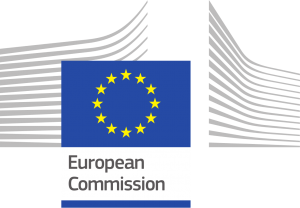02
Mar
European Commission Postpones Vote to Define and Regulate Endocrine Disrupting Chemicals
(Beyond Pesticides, March 2, 2017) On Tuesday, the European Commission (EC) refrained from voting on proposed scientific criteria that would have identified endocrine disrupting chemicals (EDC) and led to regulation on their use in EU countries. This sends the Commission back to the drawing board on the proposal, on which they hope to eventually take a formal vote. The failure to move forward with defined criteria on these hazardous chemicals, which are present in pesticides, biocides, and self-care products, is still largely due to the disagreements of voting member states over the rules reflecting hazard or risk-based criteria. There have been several other meetings of the member states on this proposal, including a meeting in December which highlighted the inadequacies of the criteria. After this meeting, according to Bas Eickhout, of the Greens-European Free Alliance, “Under the Commission’s criteria, it is likely that not a single substance would be identified as an endocrine disrupter, and they would effectively escape specific regulation.”
 This all follows on the weak regulations issued by the EC in June 2016 to regulate endocrine disruptors in pesticide products, which ultimately undermine the precautionary legal standard that governs pesticide usage in Europe. Many scientists and advocacy organizations criticized the proposed regulations for creating an impossibly high burden of proof for defining harm from endocrine disrupting pesticides and other products.
This all follows on the weak regulations issued by the EC in June 2016 to regulate endocrine disruptors in pesticide products, which ultimately undermine the precautionary legal standard that governs pesticide usage in Europe. Many scientists and advocacy organizations criticized the proposed regulations for creating an impossibly high burden of proof for defining harm from endocrine disrupting pesticides and other products.
According to Commission documents, the “adoption of criteria to identify endocrine-disrupting substances will fulfill the legal obligations under the plant protection products and biocides legislation. Once adopted, the EU regulatory system will be the first regulatory system worldwide to define scientific criteria for endocrine disruptors in legislation.” The stalling of this process to define and adopt criteria is resulting in unnecessary and harmful exposures to all citizens in Europe, but will hopefully result in criteria that are adequately protective of public health and the environment.
The regulations created by the EC endorse the World Health Organization’s (WHO) definition of EDCs. WHO defines an endocrine disruptor as “an exogenous substance or mixture that alters function(s) of the endocrine system and consequently causes adverse health effects in an intact organism, or its progeny, or (sub)populations.” However, the regulations go little beyond defining the term, and do not include clear criteria, which is what the EC has been trying to sort out for the past few months. In speaking with The Guardian, Andreas Kortenkamp, PhD, stated, “In effect, the commission has decided to place the burden of deciding how to regulate endocrine disrupting chemicals onto the assessors on a case-by-case basis.”
Mirroring the EC’s failure to complete its process to regulate endocrine disruptors, the U.S. has taken little action despite a mandate in the 1996 Food Quality Protection Act (FQPA) that requires EPA to screen pesticides for their endocrine disrupting potential. To date, EPA has only partially screened some chemicals.
Under EPA’s endocrine disruption screening protocol (EDSP), the agency uses a two-tiered approach to screen pesticide chemicals and environmental contaminants for their potential effect on estrogen, androgen and thyroid hormone systems. EPA’s last publicly released report for tier 1 screening of only 52 chemicals found no evidence of endocrine pathways for 20 chemicals. For 14 chemicals that the agency said did show potential interaction, EPA stated that it “already has enough information to conclude that they do not pose risks.” Of the remaining 18 chemicals which went through tier 2 screening, EPA found that all showed potential interaction with the thyroid pathway, 17 of them with the androgen (male hormones) pathway, and 14 also potentially interacted with the estrogen (female hormones) pathway.
It will take several more years for EPA to completely screen any endocrine disrupting chemicals. Not surprisingly, EPA’s EDSP has been heavily criticized for decade-long delays and not placing the chemicals through more rigorous testing that includes low dose responses in the interest of protecting human health and the environment. The failure to incorporate modern toxicological science has led researchers to criticize EPA’s testing protocol as outdated, and not keeping pace with advancing science. The agency does not evaluate the potential for chemicals to exhibit non-monotonic dose response curves, where a material shows the potential for a harmful response at low, even minute levels of exposure. This effect, confirmed through independent research, challenges the traditional toxicological maxim that “the dose makes the poison.”
Beyond Pesticides supports strong protections from pesticides, including endocrine disruptors, by advocating for regulatory action that supports and encourages alternative systems that do not require these chemicals. Through the Eating with a Conscience tool, those concerned about pesticides on their produce and can find out the chemicals that are allowed in their production. Beyond Pesticides’ Lawn and Landscapes webpage helps property owners manage healthy, weed-free lawns without the use of pesticides linked to endocrine disruption and other ill health effects. Ultimately, by supporting organic agriculture, which prohibits the use of harmful synthetic pesticides, the health and economic burden that endocrine disruptors and other pesticides put on our society can be drastically reduced.
Sources: The Connexion, Chemical Watch
All unattributed positions and opinions in this piece are those of Beyond Pesticides.










